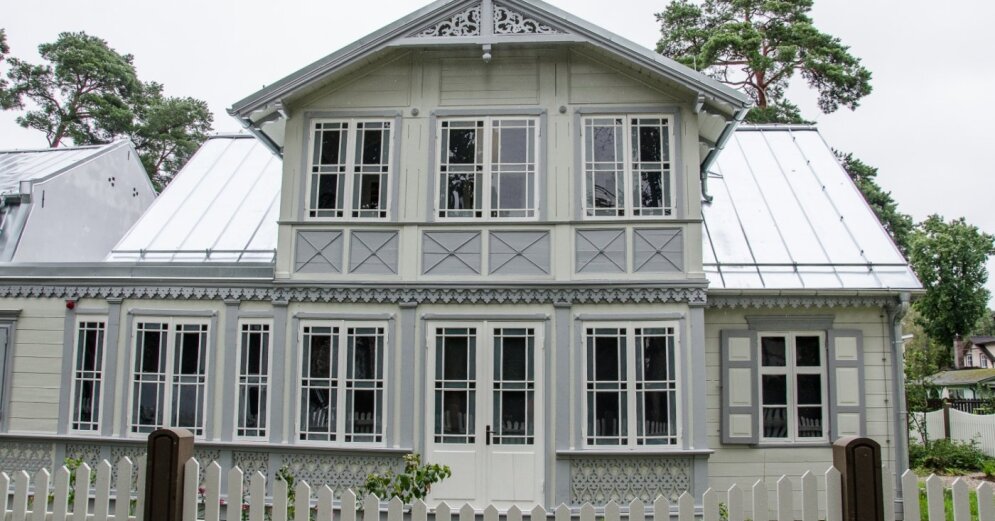Rainis and Aspazija summer house in Jurmala, Majori, Jāņa Pliekšāna street 5/7, from June 15 to July 3 the exhibition will be on view “Andrejs Upīts, Jānis Akuraters, Rainis and the cultural policy of the new Latvian state “, dedicated to the activities of three writers” in the role of the Minister of Culture “.
–
–
Content will continue after the ad
Advertising
–
According to Zane Grudule, a representative of the Association of Memorial Museums, the exhibition tells about the activities of writers Andrejs Upītis, Jānis Akuraters and Rainis “in the role of the Minister of Culture” at a time when there was no special Ministry of Culture, but its functions were performed by Art Departments.
Andrejs Upīts was the head of the Art Department of the Soviet Latvian Education Commissariat from January 1919 until the end of May. Shortly while the government of Peter Stucka was in Riga, the Workers’ Theater was established, the Riga City Art Museum was nationalized, and workshops on proletarian art were established. And Andrejs Upītis played an important role in these events.
When the government of the Republic of Latvia returned to Riga from Liepaja in 1919, it was necessary to deal with the turmoil in culture created by the “red episode” and to create the cultural policy of the new State. An Art Department was established in the Ministry of Education. Its head was intended for Rainis, but in September 1919 he had not yet returned from exile in Switzerland. Jānis Akuraters worked as the head of the Literature and Theater Department in the Art Department, and in the autumn of 1919 he became the acting head of the Art Department. When Rainis returned from exile in 1920, he was appointed head of the Art Department. The Department of Arts was actively involved in shaping the cultural policy of the new state.
The exhibition “Andrejs Upīts, Jānis Akuraters, Rainis and the Cultural Policy of the New Latvian State” tells about the structure and operation of the Art Department of the Education Commission and the Art Department of the Ministry of Education, as well as about the most important issues related to cultural policy in 1919-1920. per year. It is interesting to see how in the period when political powers changed so quickly, cultural policy issues addressed by one political system are understood and continued in another political system. This affected, for example, both theater and museum activities. And in these complex processes, the interest of the person in power, the vision of the situation and the scope of activity played an important role, the creators of the exhibition write.
This period, when Jānis Akuraters, Andrejs Upīts and Rainis held leading positions related to the development of the cultural policy of the whole country, was not long. However, as writers, it gave them an experience that allowed them to better understand the psychology and destinies of power-related personalities and helped to create such play characters as Zemgale’s chief Viesturs (Jānis Akuraters), Iļju Muromietis (Rainis) and Mirabo (Andrejs Upītis).
The exhibition is a joint work of the Rainis and Aspazija Museum, the Andrejs Upītis Museum and the Jānis Akuraters Museum. The authors of its content are Arnis Koroševskis, Astrīda Cīrule and Maira Valtere. Artist – Ints Sedlenieks, cameraman – Aldis Šenbergs.
Due to the current requirements to limit the spread of Covid-19, Rainis and Aspazija summer house only accepts individual visitors and members of one household. You are advised not to visit the museum if you have symptoms of a respiratory infection, certain self-isolation, home quarantine or strict isolation. The museum has the right to deny entry to the museum to persons with signs of respiratory infection and to invite them to leave the museum. Every visitor to the museum must wear a mouth and nose mask.
The exhibition is open from June 15 to July 3, and will be exhibited again in September.
–


